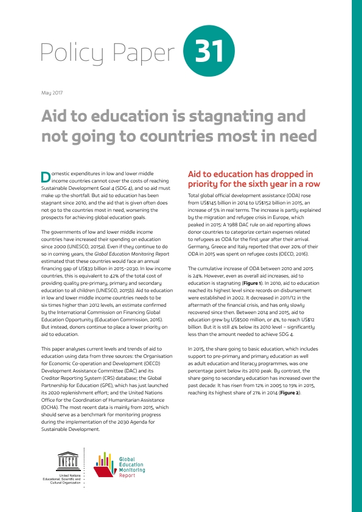
Aid to education is stagnating and not going to countries most in need
OverviewDomestic expenditures in low and lower middle income countries cannot cover the costs of reaching Sustainable Development Goal 4 (SDG 4), and so aid must make up the shortfall. But aid to education has been stagnant since 2010, and the aid that is given often does not go to the countries most in need, worsening the prospects for achieving global education goals. This paper analyses current levels and trends of aid to education using data from three sources: the Organisation for Economic Co-operation and Development (OECD) Development Assistance Committee (DAC) and its Creditor Reporting System (CRS) database; the Global Partnership for Education (GPE), which has just launched its 2020 replenishment effort; and the United Nations Office for the Coordination of Humanitarian Assistance (OCHA). The most recent data is mainly from 2015, which should serve as a benchmark for monitoring progress during the implementation of the 2030 Agenda for Sustainable Development.

